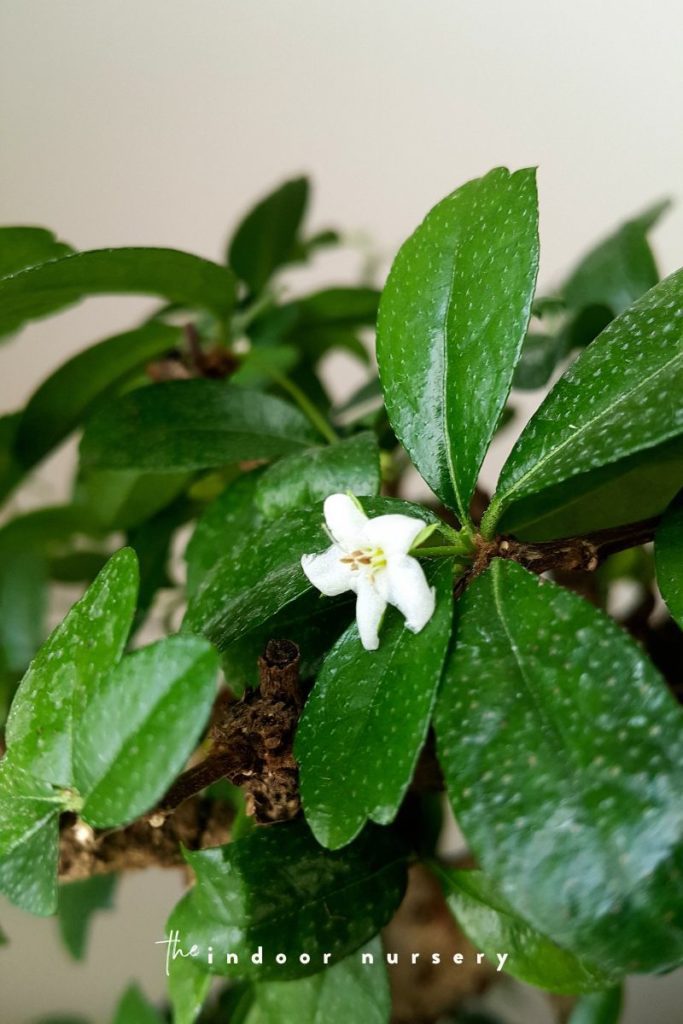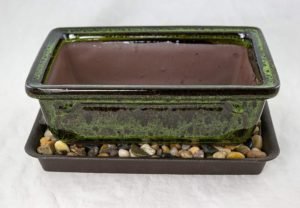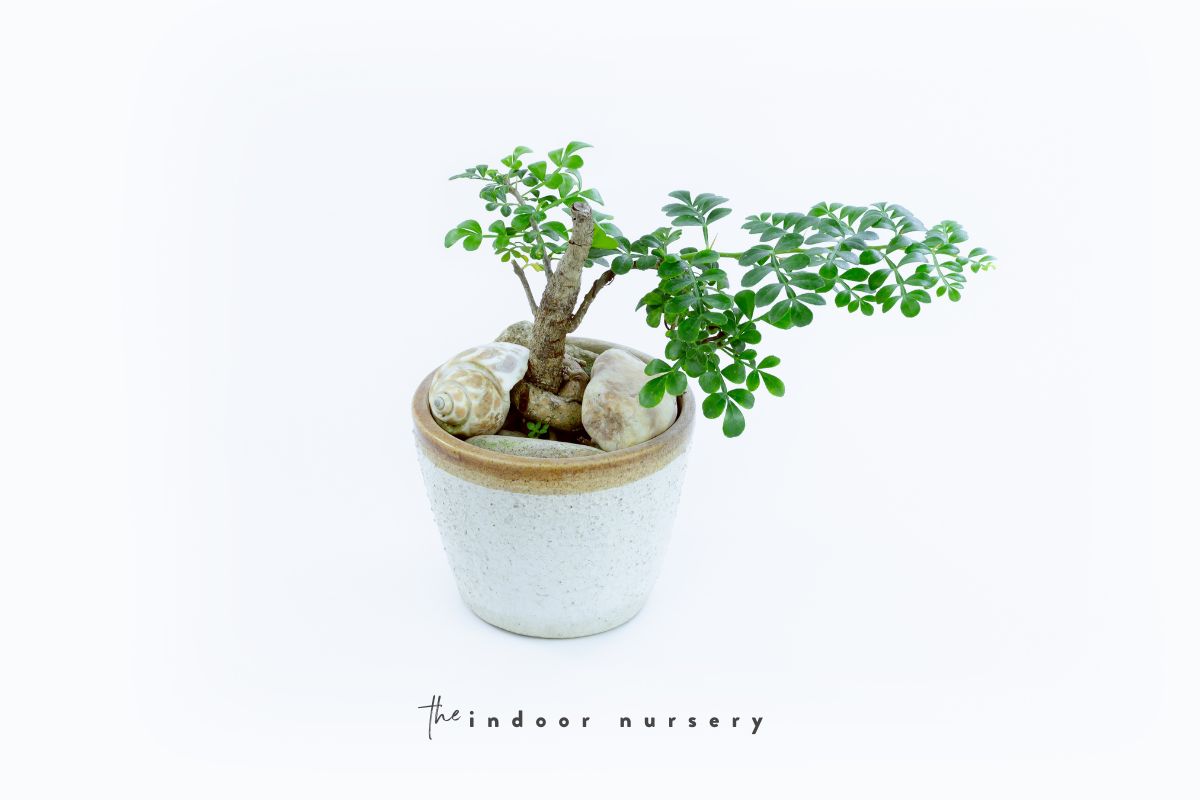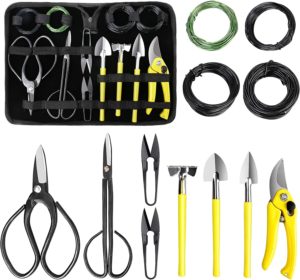This tropical evergreen shrub originating from Southern China is a great houseplant for bonsai lovers in warm(ish) climates. With proper care, this flowering tropical bonsai tree will fill with small white flowers during spring and early winter…
…and sometimes even year round.
So is the Fukien Tea bonsai for you? Let’s walk through the proper care to find out.
Important Fukien Tea bonsai care instructions
Fukien Tea Trees originate from Southern China, in the Fujien province. The Fukien Tea bonsai is characterized by small dark green leaves that are covered with hairs. The tree also has a light brown bark that tends to crack as it matures. However, the most fascinating feature of this tree is its lovely small flowers that turn to tiny dark berries, although this is only typical with small-leaf varieties of the Fukien Tea.
Lighting and temperature
The Fukien Tea bonsai tree appreciates warm temps and is not tolerant with temperate climates, so it is helpful to grow indoors. The small tree likes a mild 70 degrees Fahrenheit and plenty of sun, making it perfect for setting next to warm windows. Because of this, the Fukien Tea Tree bonsai is best suited in milder climates. Be mindful of lower humidity levels during winter months as indoor heating can dry out the bonsai tree. Be sure to place your indoor bonsai in a humidity tray filled with water to help regulate humidity.
Keep in mind, though, that the Fukien Tree can be quite a challenge to grow since it dislikes sudden changes in light and temperature. Nevertheless, those who prefer to take on the challenge of caring for this bonsai tree species will realize that their efforts are worth it because of its striking beauty.
While the tree is best grown indoors, it still needs regular exposure to direct sunlight at least for an hour. You can place your indoor bonsai next to a bright window that faces the south or west. If you place the plant in an area that is facing the north or east, then you will need to provide it with artificial light for at least 10 hours daily.
If you’d like to take your bonsai outdoors for brighter direct sunlight, the perfect time of the day to take the plant outdoors is in the morning or late afternoon. Morning and late afternoon sun rays are not too harsh, unlike direct midday sunlight.

Watering
Bonsai trees like moist soil with good drainage. You need to make sure that the soil is kept a little moist to somewhat dry regularly between watering. Bonsai soil that remains constantly wet will cause root rot. On the other hand, soil that is too dry will result in dropping and shriveled leaves. Prolonged dryness of soil will make the leaves turn black, limp and eventually fall off its branches. When this happens, try watering the little tree more regularly and keep the soil moist (but not soggy!). This will encourage the growth of replacement leaves.
Use a bonsai pot with drainage holes over a humidity tray filled with pebbles and a little bit of water. This will allow you to monitor the soil moisture levels carefully while maintaining humidity.

Feeding
You need to feed the Fukien Tea bonsai every other week beginning spring until autumn. When winter comes, you may reduce the feeding schedule to once a month. It is ideal that you use half-strength fertilizer for your plant to boost its growth, but make sure you do not overfeed it to prevent serious consequences to the plant.
These gentle slow release tablets are perfect for gently fertilizing bonsai trees:

Weekly feeding can promote new growth during the growing season (spring until autumn), as long as the fertilizer strength remains diluted or slow release. If the leaves on your bonsai tree start to turn yellow and drop, then stop fertilizing immediately and flush with filtered water. Let the soil almost dry out before watering again.
Pests
The Fukien Tea Tree is no stranger to insect infestations. Mealybugs are the common enemies of the Fukien Tea. These pests are white and fluffy in appearance, and they are commonly found on new branches at the base portion of the leaves. Aside from mealybugs, red spider mites may serve as a threat to the plant’s health. There are also root mealy bugs that target the plant’s roots, so it is difficult to see these insects unless you are repotting the tree. If you want to get rid of these pests, you may use insecticides, like neem oil, to eliminate them completely. Be sure to follow package directions before using an insecticide to prevent causing damage to your Fukien Tea bonsai as you protect it from pesky insects. Alternatively, I like to use essential oils against insect infestations too. Sprinkling cinnamon powder in the soil works well for any insects in the soil.
Pruning
The Fukien Tea bonsai tree is fun to prune because it responds so well. New shoots are flexible, making it easy to wire or prune. Regular pruning while the small tree is actively growing will give you nice and thick branches.
learn more about bonsai plants
- How to keep bonsai leaves small
- How long do bonsai trees live? Longer than you.
- How to care for your Japanese black pine bonsai
- How to grow aqua bonsai (water bonsai)
- How to care for a Red Maple bonsai tree
- Pomegranate bonsai tree care guide for beginners
- 15 bonsai styles and shapes that will inspire you
- Bonsai palm tree care: How to care for palm tree bonsais





